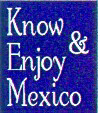

|
Taxco |
| Home Page | About Us | City Description | Hotels | Villa, B& B's | Restaurants | Golf + Activities | Sightseeing | Destination Services | RV/Trailer Parks & Hostels | Travel Value Packages | Airlines | Other Cities in Mexico | What's New | General Info | State Map | Regional Map | Country Map | Blog |
| Nearby Cities -> | Acapulco | Chilpancingo | Cuernavaca | Iguala | |
|
Nestled on the eastern flank of the Sierra Madre Occidental, Taxco's "modern" history dates back to the early periods of the Spanish Conquest of Tenochtitlan. Taxco's name is derived from the Nahuatl word "Tlachco", which means "place with ball-court".
Cuauhtemoc, one of the last Aztec emperors was born in the area and attended Calmecac - a highly disciplined learning center used by Aztec nobility for scholastic and training centers for their male offspring. His remains were discovered by Eulalia Guzman, an archeologist by profession, in the early 1950's in the Church of Santa Maria de la Asuncion in the village of Ixcateopan situated about 30 miles from Taxco. Cuauhtemoc's historical legacy is honored in a pool-side mural designed by Juan O'Gorman at the Posada de la Mision Hotel using multi-colored rocks, slate and white marble from nearby quarries. Shortly after conquering Tenochtitlan, Hernan Cortes visited the area around what is now Taxco while exploring the vastness of the territory he had conquered. Silver ore flourished in the surrounding mountains and mining it became a high priority. He stimulated its development and sent reports of the vast mineral wealth in the area back to Spain. "Surface" ore was promptly depleted and silver-mining activity shifted to other areas in Mexico. In the 18th Century, Jose de la Borda - a seasoned entrepreneur with mixed commercial fortunes that made him the richest man in the world a total of six times - mined a silver ore vein that had been missed and amassed a fortune that enabled him to finance the construction of Santa Prisca Church - Taxco's signature building since its completion in 1759. In 1931, after several visits to Mexico City that started in 1926, William Spratling, an Associate Professor of Architecture at Tulane University, was motivated by Dwight Morrow, the current US Ambassador to Mexico, to visit Taxco and see if he could motivate locals to become silversmiths. Spratling followed Morrow's suggestion and hired a goldsmith from nearby Iguala to create silverware using his designs. In short order, an apprentice system developed among locals, a silver-content standard was implemented according to Spratling's specifications and the world became aware of Taxco's silver-craft output. Spratling's enterprise flourished and prospered until he invited private investors during World War II to finance the demand on his silver-craft. Through bad business decisions, he lost control of his company and was out of business in 1946. Over the years, the apprentices he fostered such as Los Castillo and Antonio Pineda became famous silversmiths on their own right opening shops in important business centers around the world. Taxco's traditions include a "Silver Fair" in November and a "Passion of Christ" ceremony on "Good Friday". Nature blesses Taxco with a myriad of colors in the surrounding hills. A dry "brown" landscape during Winter/Early Spring turns green after the first rainfalls in late May or early June. After the rainy season, mid to late October, the hills come alive with the orange color of the Cempazuchitl flowers - the traditional marigold used in "Day of the Dead" ceremonies. Today's Taxco is designated as a "National Monument" by Mexico's Congress - preserved in its traditional cobble-stoned streets, red-tiled roofs and white-washed buildings regimented by a strict building code that does not allow signage in any color besides black or red. |
|
| External links: |
| Home Page | About Us | City Description | Hotels | Villa, B& B's | Restaurants | Golf + Activities | Sightseeing | Destination Services | RV/Trailer Parks & Hostels | Travel Value Packages | Airlines | Other Cities in Mexico | What's New | General Info | State Map | Regional Map | Country Map | Blog |
|
Based on information contained in the Mexico Travel Database on January 25, 2012 |
| Powered by DataPerfect |